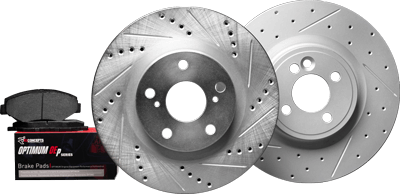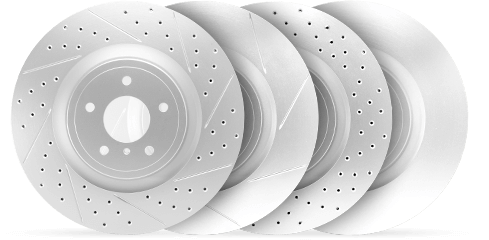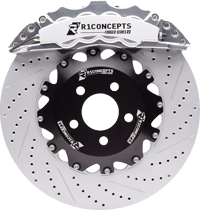What does the emergency brake do? Simply put, it secures your vehicle when parked and acts as a lifesaving feature when the main brakes give out.
In this guide, we’ll uncover the integral role it plays and how to use it effectively, giving you peace of mind in any parking scenario or unexpected brake malfunction.
Key Takeaways
- The emergency brake, also known as the parking brake, is a separate mechanical system that ensures vehicle stability when parked and serves as a backup to slow or stop the vehicle if the primary brakes fail.
- Emergency brakes come in three main types—hand lever, foot pedal, and electronic button—each with distinct mechanisms of operation and their specific engagement and release procedures.
- Regular use and maintenance of the emergency brake are essential for proper functioning, and using it while driving, especially at high speeds or on slippery surfaces, can lead to wheel lockup and loss of vehicle control.
The Emergency Brake: Functions and Mechanisms

The parking brake, also known as the emergency brake, is a very important safety feature in your car. It works separately from the main brakes you use to stop while driving. The emergency brake helps to make sure your car stays still when you park it, especially on a hill. It’s usually a mechanical system, which means you use a lever by hand to make the back brakes hold the car in place. If your main brakes ever stop working, the emergency brake can be used to slow down or stop your car.
Even though it is called an ‘emergency brake’, its main purpose is quite simple but very important. It helps to keep your car from moving when you have parked it, especially on hills. Also, if there is a problem with the main brakes, this backup system can help you slow down or stop your car by using a handle or pedal that applies pressure to the rear brakes. Let’s look more closely at these two main uses of the emergency brake in our cars.
Holding the vehicle stationary
The emergency brake, also known as the parking brake, is designed to keep your vehicle stationary when it is parked. This function is particularly important for vehicles with a manual transmission to prevent the car from rolling away on slopes.
In automatic transmission vehicles, this brake can also be used to maintain position temporarily in situations such as waiting at traffic lights or preparing to drive up an incline.
To engage the parking brakes effectively.
- Firstly halt your car using its primary brakes. Then apply the emergency brake prior to putting your vehicle into park mode.
- With modern vehicles that come equipped with electronic parking systems, electric motors are utilized to press the brake pads onto the discs thus keeping your vehicle fixed in place.
- By doing so not only is your car safeguarded against unintended movement but it alleviates stress from other parts of your vehicle’s transmission system and components during periods of being parked.
Slowing or stopping the vehicle in case of main brake failure
In case your main brakes fail while driving, using the emergency brake is important for safety. This backup system helps to slow down or stop your car. When using it, be careful to avoid locking the wheels, which could make you lose control of the car. It’s best to pull the hand lever slowly.
If your brakes stop working, pulling the emergency brake gently can help stop your car safely. It’s important to use it carefully to avoid skidding or spinning. Next, we will explain how to use this important safety feature properly.
Common Locations and Types of Emergency Brakes
Emergency brakes are strategically positioned within your vehicle for quick access and can be located:
- Between the front seats
- Beneath the instrument panel as stick levers (typically in vehicles of older models)
- In between distinct separated front seats (specific to vehicles that feature this design)
Modern vehicles come equipped with one of three primary emergency brake systems – the hand lever, foot pedal, or electronic button. The operation and mechanisms of these types vary distinctly and will be elaborately covered in subsequent sections.
Hand lever
The hand lever emergency brake is usually found between the front seats of a car. To use this kind of brake, you have to pull up a handle. This handle is connected to cables that make the brakes at the wheels work, so your car doesn’t move.
It’s easy to use this brake to stop your car from rolling when you park it. But, some people might find it hard to pull the handle if they don’t have much strength.
Foot pedal
Typically found in the footwell area of the driver, the emergency brake that is operated by a foot pedal stands out from other floor pedals. To engage this brake during an emergency, one simply needs to press down on it with their foot.
The foot pedal emergency brake is particularly user-friendly, making it an excellent choice for those who might find hand levers challenging. To ensure your car stays put, you’ll need to press down firmly on the pedal.
Electronic button

As cars become more modern, many now have electronic emergency brakes, which people often call e-brakes. These e-brakes work with the push of a button that is easy to reach, usually on the dashboard or the middle area of the car. Instead of using a lever or a foot pedal that needs you to use your hands or feet strongly, turning on an electronic emergency brake is easy and doesn’t need much effort.
These e-brakes have some special features:
- They let go on their own when the car starts moving, which you see a lot in cars that you have to shift gears manually.
- They give a smoother and more reliable way to stop your car.
- But, because they are complicated, fixing them can cost more money.
How to Use Your Emergency Brake Correctly
It’s important to know how your emergency brake works and how to use it the right way. Whether your car has a hand lever, a foot pedal, or an electronic button for the emergency brake, each type has its own way of being used.
Let’s talk about how to set and release the emergency brake depending on what kind you have.
Setting the emergency brake
To use your emergency brake the right way, you need to follow some steps. Before you start driving, turn on the engine, press the main brake, and then let go of the emergency brake before you put the car into drive. This helps prevent damage to the emergency brake system.
If the main brakes fail while you’re driving, you have some other options like shifting to a lower gear or using objects to stop your vehicle. But, using the emergency brake is one of the best solutions in such emergencies.
Releasing the emergency brake
Make sure the emergency brake is completely off before you start driving. If it’s not, it can cause the brakes to wear out quickly and get too hot, which can make them not last as long. How you turn off the brake depends on the type you have.
If your car has a hand lever, lift the lever a little, press the button to release it, and then put it all the way down. If your car has a foot pedal brake, press it down again to turn it off. For cars with an electronic brake, find the button or switch, which is usually near the middle console or steering wheel, and press it to stop the brake from working.
Safety Tips and Taking Care of Your Emergency Brake
Understanding the functioning and regular maintenance of the emergency brake is crucial for vehicle safety. Here’s a step-by-step guide to checking and taking care of your emergency brake:
Step 1: Regular Inspection
Schedule a regular inspection of the emergency brake system. This should be done at least twice a year or as recommended by your vehicle’s manufacturer. During this inspection, a professional mechanic will check for wear and tear, and ensure that all components are functioning correctly.
Step 2: Checking the Brake Cables
The cables that connect the emergency brake lever to the brake shoes can become loose or corroded over time. To check the cables:
- Engage the emergency brake and ensure that it holds the vehicle stationary.
- Inspect the cables under the vehicle for any signs of corrosion or damage.
- Make sure the cables are taut, not slack, indicating they are correctly adjusted.
Step 3: Testing Brake Tension
The emergency brake should have a certain amount of resistance when you engage it. To test the tension:
- Pull the hand lever or press the foot pedal.
- Count the number of clicks or gauge the amount of travel before the brake engages. A higher number of clicks or more travel than usual may indicate a need for adjustment.
Step 4: Brake Pad and Shoe Inspection
The brake pads and shoes are crucial for the emergency brake to function properly. To inspect them:
- Remove the wheel and the brake drum or caliper.
- Check the thickness of the brake pads or shoes.
- Look for any uneven wear or damage that might require replacement.
Step 5: Lubrication of Moving Parts
Proper lubrication prevents rust and ensures smooth operation. Focus on:
- The pivot points on the brake caliper or drum.
- The emergency brake lever or pedal assembly.
- The cables where they enter the sheath.
Use high-temperature brake lubricant for these components.
Step 6: Adjusting the Emergency Brake
If the inspection reveals that the emergency brake is not engaging properly, it may need an adjustment. This is usually done by:
- Locating the adjustment nut on the emergency brake cable.
- Tightening or loosening the nut until the proper tension is achieved.
- Testing the brake again to ensure it engages correctly without being too tight.
Step 7: Professional Servicing
If you’re not comfortable performing these checks and adjustments yourself, or if any issues are beyond basic maintenance, take your vehicle to a professional mechanic. They can perform a comprehensive check and necessary repairs to ensure your emergency brake is in optimal condition.
When to see a mechanic
If your emergency brake isn’t working right, it’s a serious safety problem and you should get it fixed quickly. If your car’s emergency brake is too weak to keep the car still, or it doesn’t work at all, go get a mechanic to fix this immediately.
Risks When Using the Emergency Brake While the Car is Moving
The emergency brake is meant to keep your car from moving when you park it or to help you stop if the normal brakes break. You shouldn’t use it when the car is moving. If you do, there can be impending dangers that might happen.
Danger of the Wheels Stopping Suddenly
If you pull the emergency brake while you’re driving, especially if you’re going fast, it can cause:
- The back wheels to stop turning
- The car to turn in ways you can’t control
- You to lose control over where the car is going
- The car to turn around all the way
This happens because the emergency brake usually only works on the back wheels. You should only use it in a real emergency and very carefully to avoid these dangers.
Using the emergency brake to do tricks like you see in movies, like drifting, is very dangerous unless you are in a place where it’s safe to practice. Safety should always be the most important thing when you’re driving.
When the Road is Slippery
How well your emergency brake works can change a lot depending on the weather and the road. If you use the emergency brake when the road is wet or icy, the wheels might stop turning and you could lose control of the car. It might slide or skid.
If you really need to use the emergency brake when the road is bad, you should pull it slowly and in short bursts. This can help stop the wheels from stopping suddenly. Anti-lock Braking Systems are made to keep the wheels from stopping suddenly when you brake hard and help the car keep gripping the road. But if you don’t have Anti Lock Braking System or it’s not working, being careful with the emergency brake is still a good idea.
Summary
Throughout this journey, we have explored the emergency brake in detail, understanding its functions, types, usage, safety concerns, and maintenance. We’ve revealed that it’s not just a lever or button in your car but a crucial safety feature that can save lives if used correctly. Remember, the key lies in understanding its operation, knowing when and how to use it, and ensuring its regular maintenance. Drive safe!
Frequently Asked Questions
What is the primary function of the emergency brake?
The emergency brake’s main purpose is to keep the vehicle securely stationary while it is parked, thereby preventing any unintended movement and ensuring safety.
How often should the emergency brake be inspected?
Regular vehicle servicing or at least every six months, the emergency brake should be scrutinized to guarantee its proper operation.
What can cause an emergency brake to fail?
Due to factors such as cables stretching, lever malfunctions, corrosion on the cables, seizing of calipers, or malfunctioning sensors, emergency brakes might experience failure.
To prevent these problems from occurring with your brakes and especially the emergency braking system, consistent upkeep and checks are advised.
What should I do if my emergency brake is not working?
Should you discover that your emergency brake has malfunctioned, it’s crucial to immediately seek the expertise of a mechanic to rectify this critical safety issue. Neglecting such an important problem can compromise not only your own well-being, but also endanger other road users.
Is it safe to use the emergency brake while driving?
Utilizing the emergency brake while the vehicle is in motion can endanger stability and create hazardous conditions, particularly on slick surfaces. It is not a safe practice.









